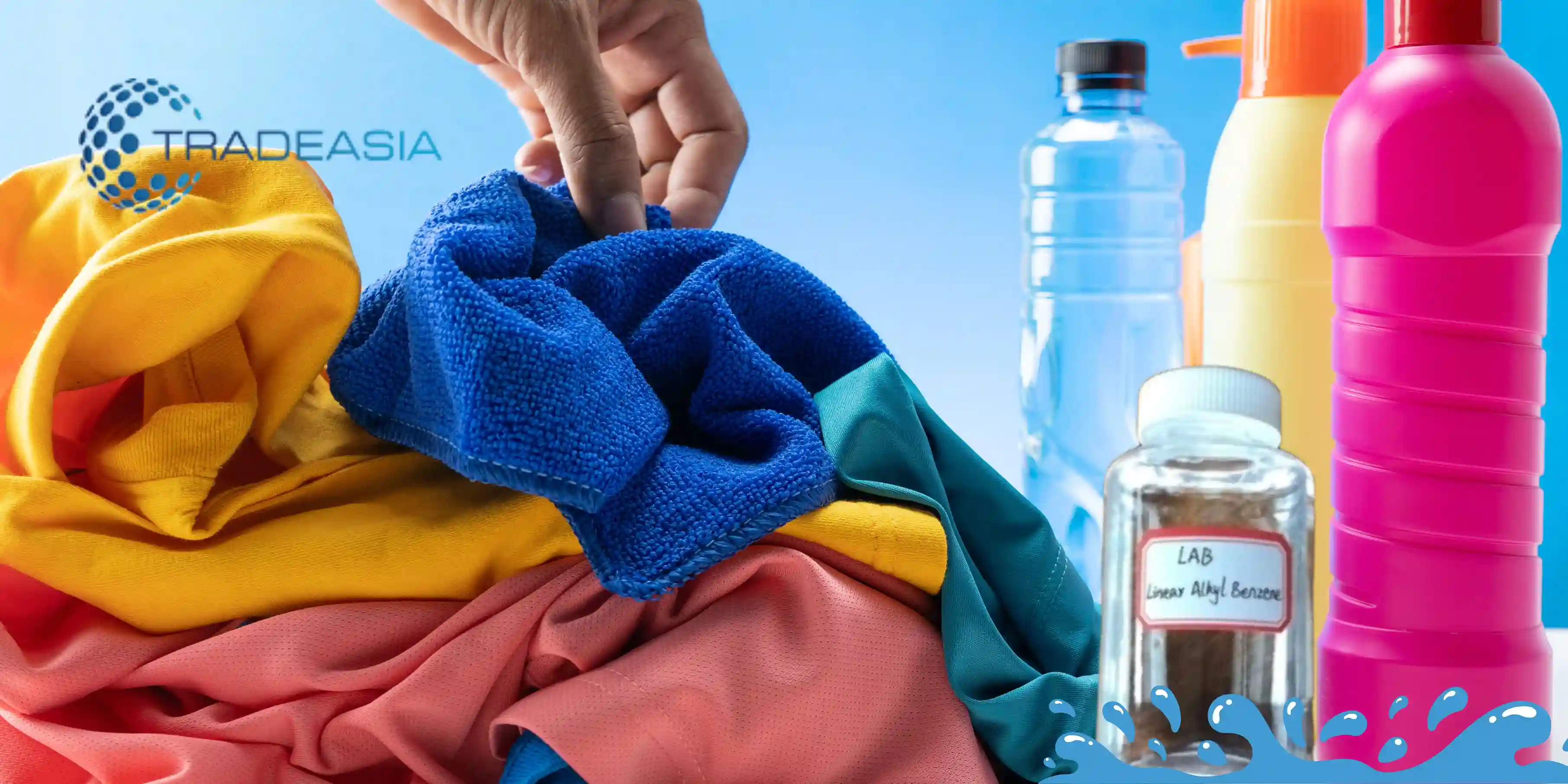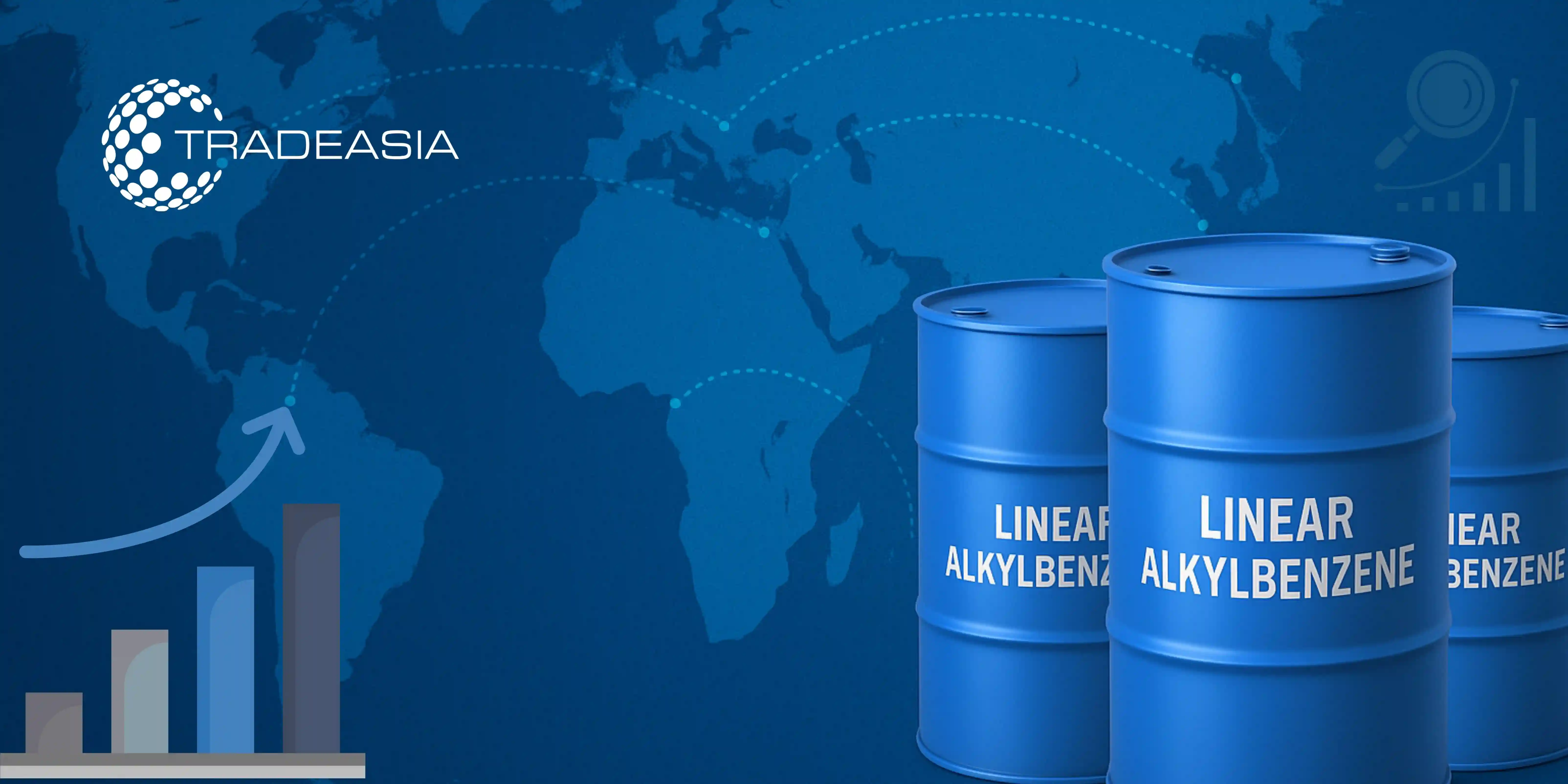LABSA and Its Importance in Detergents
Linear Alkylbenzene Sulfonic Acid (LABSA) is one of the most widely used synthetic surfactants in the global detergent industry. Derived from linear alkylbenzene (LAB), LABSA is the key ingredient in household and industrial cleaning products, accounting for more than 40% of surfactant consumption worldwide. Its powerful cleaning, foaming, and emulsifying properties make it an indispensable raw material in both powder and liquid detergents.
However, as sustainability becomes a defining factor in global chemical markets, the sourcing and use of LABSA are under increasing scrutiny. Traditional LABSA production relies heavily on petrochemical feedstocks such as kerosene and benzene. These raw materials present challenges in terms of carbon footprint and long-term environmental impact.
This article explores the sustainable sourcing and application of LABSA in the detergent industry, highlighting market trends, challenges, and opportunities between 2025 and 2035. It provides insights into how companies are transitioning toward greener processes while maintaining the efficiency and affordability of detergents.
Global Demand for LABSA in Detergents
The demand for LABSA continues to grow globally, driven by population growth, urbanization, and rising hygiene awareness. According to Research and Markets, the LAB and LABSA markets are projected to expand steadily, with detergents remaining the largest application segment.
In emerging economies such as India, Indonesia, and Africa, the growth of middle-class populations and increased access to consumer goods are boosting detergent demand. LABSA’s affordability compared to alternative surfactants ensures it remains the preferred ingredient for mass-market cleaning products.
Meanwhile, in developed markets, the focus has shifted toward eco-friendly detergents. Although demand growth is slower, companies are reformulating products to reduce environmental impact, creating opportunities for sustainably sourced LABSA.
Sustainable Sourcing of Raw Materials
Sustainability in LABSA production begins with sourcing raw materials. Traditionally, kerosene and benzene derived from crude oil have been the main feedstocks for producing linear alkylbenzene (LAB), which is then sulfonated into LABSA.
In recent years, there has been growing interest in bio-based feedstocks, such as renewable kerosene or green benzene derived from biomass. These alternatives aim to reduce carbon emissions while maintaining the same chemical properties required for LABSA production.
Additionally, many producers are adopting certified supply chains to ensure transparency and sustainability in procurement. This aligns with global initiatives like the UN Sustainable Development Goals (SDGs) and corporate ESG commitments, helping detergent manufacturers meet consumer expectations for greener products.
Energy Efficiency and Green Manufacturing Processes
Beyond raw material sourcing, sustainability in LABSA also involves improvements in the production process. Modern sulfonation technologies allow for lower energy consumption, reduced emissions, and better resource utilization compared to older methods.
For instance, closed-loop systems are increasingly being adopted to recycle spent acid and minimize waste generation. Some companies are also investing in renewable energy to power LABSA production plants, reducing the carbon footprint of detergent ingredients.
In countries with stricter environmental regulations, such as Europe, these innovations are becoming standard practice. Global players with large-scale facilities in Asia and the Middle East are also upgrading their technologies to stay competitive in sustainability benchmarks.
Applications of LABSA in the Detergent Industry
LABSA is primarily used in the manufacture of household detergents, including laundry powders, liquid detergents, and dishwashing liquids. Its excellent foaming ability and grease-cutting properties make it ideal for cleaning applications.
In the industrial and institutional cleaning sector, LABSA is incorporated into heavy-duty cleaners, degreasers, and emulsifiers. Its strong cleaning action and cost-effectiveness make it suitable for large-scale use in hotels, hospitals, and food service industries.
Additionally, LABSA is used in blended surfactant formulations, where it works synergistically with nonionic and other surfactants to enhance performance. This versatility ensures that LABSA remains a backbone of the detergent industry even as alternative surfactants emerge.
Environmental Impact and Biodegradability
A key advantage of LABSA over other synthetic surfactants is its biodegradability. Linear alkylbenzene sulfonates (LAS), the salts derived from LABSA, are readily biodegradable under aerobic conditions, unlike earlier branched surfactants that posed environmental hazards.
This biodegradability has helped LABSA maintain regulatory approval in most global markets. For example, European and U.S. authorities recognize LAS as a safe and effective ingredient in household detergents when used within regulatory limits.
However, concerns remain regarding the environmental impact of petrochemical sourcing and the carbon footprint of large-scale LABSA production. This underscores the importance of transitioning toward bio-based feedstocks and greener production technologies.
Regional Market Perspectives
-
Asia-Pacific
Asia-Pacific is the largest consumer of LABSA, led by China, India, and Southeast Asia. Rapid industrialization, population growth, and rising detergent consumption make the region the focal point for both production and consumption.
-
Europe
In Europe, sustainability regulations are shaping the LABSA market. Demand remains steady, but producers are under pressure to adopt greener processes to meet REACH and environmental standards.
-
North America and Middle East
North America’s market is mature but stable, while the Middle East is emerging as a major production hub due to cost advantages and access to raw materials. Export opportunities from the Middle East to Africa and Asia are expanding.
Challenges in Sustainable LABSA Use
The transition to sustainable LABSA faces several challenges. Bio-based raw materials are still limited in scale and often more expensive than petrochemical alternatives. This creates a cost barrier for mass adoption in price-sensitive detergent markets.
Additionally, supply chain disruptions, such as volatility in crude oil prices or logistical constraints, can affect LABSA availability and cost. This uncertainty impacts both producers and buyers across global markets.
Finally, competition from alternative surfactants, such as alcohol ethoxylates and newer bio-based options, may limit LABSA’s future growth. However, its cost-effectiveness and biodegradability ensure it remains competitive for now.
Future Opportunities and Outlook 2025–2035
Looking ahead, LABSA is expected to remain the backbone of the global detergent industry between 2025 and 2035. Growth will be strongest in emerging economies, while developed regions will focus on sustainable production and eco-friendly formulations.
The rise of circular economy models offers opportunities for recycling and reusing resources in LABSA production. Partnerships between petrochemical companies, bio-based innovators, and detergent manufacturers will be key to driving innovation.
Moreover, consumer demand for affordable yet sustainable detergents ensures LABSA will continue to be relevant. By adopting greener practices, producers can secure long-term growth while meeting global sustainability goals.
Conclusion
Linear Alkylbenzene Sulfonic Acid remains a cornerstone of the detergent industry, valued for its effectiveness, cost-efficiency, and biodegradability. As the world shifts toward sustainability, LABSA’s future will depend on greener sourcing, energy-efficient manufacturing, and circular economy practices.
Global markets from Asia to Europe are aligning with this vision, driving innovation and investment in sustainable LABSA production. While challenges remain, opportunities for growth and transformation are significant. To learn more about sustainable sourcing and reliable supply of LABSA for detergent applications, reach out to our experts here
References


Leave a Comment